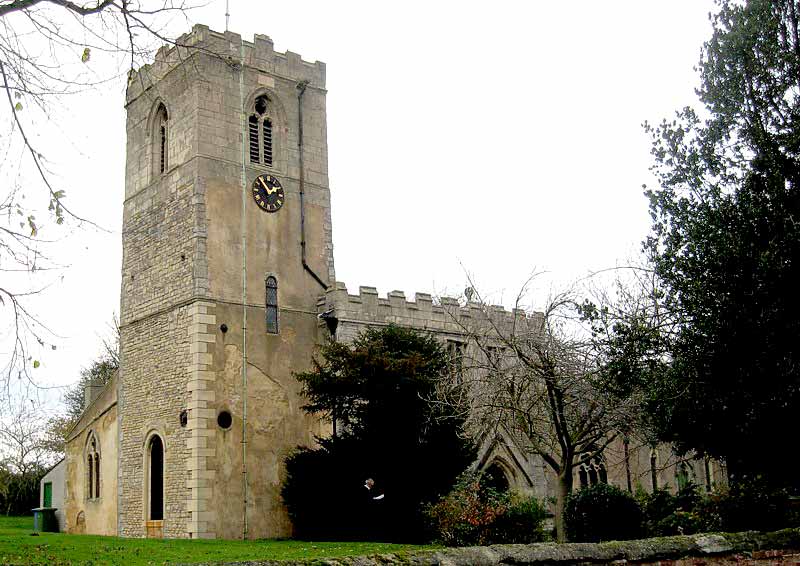The church of Holy Trinity, Everton, is the featured church for May 2024. The village of Everton is 10 km (6 miles) north of the centre of Retford.
The church consists of west tower, north aisle and lady chapel, nave, chancel with pentagonal apse, south chancel chapel, south porch.
The west tower is of three stages; the first two are of rough coursed rubble with prominent ashlar quoins re-cut in 1983. The south side of the tower contains blocks of irregular stone that are characteristic of 11th or 12th century work. The belfry stage is made of ashlar and has four 15th century openings.

Inside the south porch is another (possibly) early feature. The tympanum above the south door depicts two horse-like creatures with their tongues outstretched, licking each other on the muzzle. Pevsner thought it was probably Norman in date ‘but of Viking descent.’ However, it is clear the carving has been re-cut and Sir Stephen Glynne, who visited the church in 1850, observed that the tympanum displayed ‘the figure of a winged animal’ rather than horse-like beasts. Could it date from the restoration of the church in 1869?
The chancel arch with one order and chevron ornament and the narrow, unmoulded tower arch are both Norman.
The two-bay north aisle arcade is of the 14th century.
The nave external south wall contains early, rough stonework, including some counter pitched masonry.
The apse and Gothick south chancel chapel date from 1841.
The west window and the three windows in the apse all date from the 1870s and contain stained glass by Wailes of Newcastle.
The font was made in 1869 and is a replica of a Norman original, with interlaced, arcading, zig zag, cable moulding and other ornament. Beside it is the base of the original 12th century font.
A very worn incised alabaster slab of a knight and his lady is propped up under the tower.
Further information on the church can be found at the Southwell and Nottingham Church History Project website.
